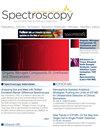用于无标记化学成像的拉曼散射
IF 1.5
4区 化学
Q4 SPECTROSCOPY
引用次数: 0
摘要
拉曼光谱通过检测从单色光源(如激光器)散射出的与分子振动能量相对应的光来提供化学信息。由于拉曼光谱通常使用可见激光,其空间分辨率与光学显微镜所能看到的大致相同。拉曼光谱与显微镜的结合在 20 世纪 70 年代首次得到证实,它可以从聚焦的激光光斑中获取化学信息。通过在样品上移动激光并记录每个位置的拉曼光谱,可以根据不同拉曼位移处的强度变化生成图像,从而在空间上描述存在的分子特征。从拉曼显微探针发展到今天,仪器的进步提高了拉曼显微镜的速度、灵敏度和空间分辨率。本文介绍了拉曼显微镜的基本原理以及技术进步如何促进各种应用的发展。本文章由计算机程序翻译,如有差异,请以英文原文为准。
Raman Scattering for Label-Free Chemical Imaging
Raman spectroscopy provides chemical information by detecting light scattered from a monochromatic source (such as a laser) at energies that correspond to molecular vibrations. Because Raman spectroscopy commonly uses visible lasers, the spatial resolution is approximately the same as what can be seen with an optical microscope. First demonstrated in the 1970s, coupling Raman spectroscopy with microscopes enabled the chemical information to be obtained from a focused laser spot. By moving the laser across the sample and recording the Raman spectrum at each location, images can be generated from changes in intensity at different Raman shifts that spatially characterize the molecules present. From the development of the Raman microprobe to today, advances in instrumentation have increased the speed, sensitivity, and spatial resolution of Raman microscopy. This article covers the fundamentals of Raman microscopy and how technological advances are enabling a variety of applications.
求助全文
通过发布文献求助,成功后即可免费获取论文全文。
去求助
来源期刊

Spectroscopy
物理-光谱学
CiteScore
1.10
自引率
0.00%
发文量
0
审稿时长
3 months
期刊介绍:
Spectroscopy welcomes manuscripts that describe techniques and applications of all forms of spectroscopy and that are of immediate interest to users in industry, academia, and government.
 求助内容:
求助内容: 应助结果提醒方式:
应助结果提醒方式:


